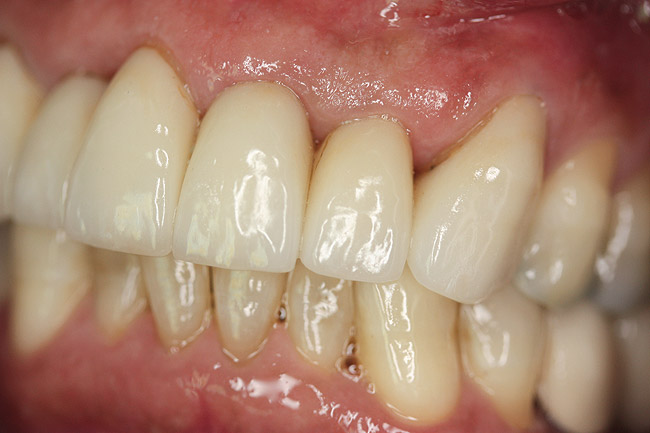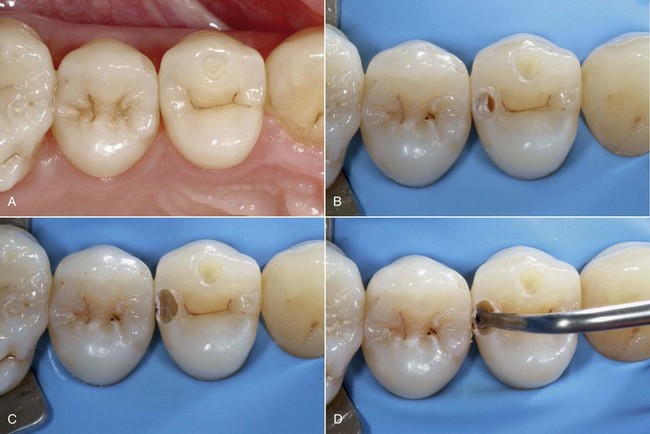Slot Prep Dentistry
Start studying DEN 7118 - Class II Amalgam and Slot Preparations. Learn vocabulary, terms, and more with flashcards, games, and other study tools. A slot preparation resembles the proximal portion of a conventional preparation without any involvement of the central groove98. It is indicated for teeth with a small proximal caries lesion and sound occlusal grooves. The axial depth and proximal extension are determined by the size of the lesion and internal line angles are rounded. Tunnel preparation 2. Box only/ slot preparation 2. MINIMALLY INVASIVE METHODS OF CAVITY PREPARATIONS 2.1 Fissurotomy Fissurotomy bur is a new approach to ultraconservative dental treatment. There are three carbide burs with a unique shape and size. ‘Fissurotomy Original’ Fig. 1 bur is used for the conservative exploration of adult molars.
RETENTION FORM:
Retention form is that form of cavity that best permits the restoration to resist displacement through tipping or lifting forces, especially masticatory loading.
PRINCIPAL MEANS OF GAINING RETENTION:
- Inverted truncated cones or undercuts.
- Dovetail.
- Elastic deformation of dentin e.g. gold foil.
- Friction – which depends on surface area, opposing walls or surfaces involved, parallelism or non-parallelism, proximity of material to walls.
- When a Class II carious lesion exists without involvement of the occlusal, a slot cavity is prepared which is essentially the proximal portion of the Class II preparation.
- Group 1 - 'Mesio-occlusal' preparation. Group 2 - 'slot' preparation. Group 3 - 'box-only' preparation. Group 4 - 'Mesio-occluso-distal' cavity preparation. All the specimens were stored in saline. They were embedded in acrylic resin up to the cervical level. The acrylic resin was confined within a mould made from rubber base material.

OTHER MEANS:
- Grooves: Mainly indicated in cast restorations, they are prepared in the walls of the proximal box inside the DEJ. The depth is equal to the width. They are placed at the axiobuccal and axiolingual line angles, putting more pressure on the buccal and lingual walls rather than on the axial wall. They are prepared parallel or slightly diverging occlusally for the proper withdrawal of the pattern.
- Internal boxes
- Posts
- Pins: Provide extra retention and can be used with amalgam, composite and cast restorations.
- Triangular areas (gold foil)
- Etching: Provides micromechanical retention by increasing the surface area for retention. This is mainly indicated in bonded restorations.
- Slots: They are prepared in dentin to increase the surface area of the preparation and have more convergent walls. These are 1 – 1.5mm deep box type preparations and can be given 9in occlusal wall or gingival wall or both. Usually they are given all along the width of the occlusal / gingival wall. Each of it has four walls that aids in retention.
- Locks: They are given in proximal box of class II cavity and are indicated mainly for amalgam restorations. They are given in dentin either in the walls of the proximal box or in the occlusal box at the line angles which the pulpal wall of the cavity makes with the occlusal wall. These are 0.2 to 0.3 mm wide and 0.5mm deep into dentin.
- Skirts: Mainly indicated in cast restorations, they are extensions of the proximal box at the line angles of the tooth or even away from it. The margins of the restorations are kept on healthy tooth structure and bevelled. The enveloping of the walls increases the surface area and aids in retention.
Retention techniques in Different Restorative materials:
AMALGAM:
Retention is enhanced by
- Parallel walls and flat pulpal floor or gingival floors
- Occlusal convergence of walls (axial retention) in class of class II.
- Occlusal convergence and dovetail
- Proximal retention in the from of axiofacial and axiolingual locks
- Slots in gingival floor.

Slot Prep Dental
CAST GOLD RESTORATIONS
Axial retention in the form of cement locking and friction in micro-irregularities.
This is enhanced by
- Parallelism: A slight divergence of the walls 2 degrees-5 degrees can be given for proper withdrawal of the pattern. In case the available height of the walls is less, the divergence should be kept minimum. At least one half of the walls should be kept parallel and the rest can be diverged.
- Increase in area.
- Occlusal extension is mandatory since it prevents tilting of the restoration.
- Increase instrength of cementing media.
- Sharp line angles except axiopulpal line angle.
- Lateral retention by dovetail and pinholes and pot holes.
TOOTH COLORED RESTORATIONS
Retention is achieved by
- Acid conditioning.
- Retentive cavity preparation.
- Physico-chemical retention.
- Posts.
DIRECT GOLD

Retention is established by
- Elastic compression developed in dentin because of condensation.
- In classIII-undercut at point angles.
- In class IV-grooves along occlusopulpal and gingivopulpal line angles.

Frequently, I see patients who have interproximal caries, but no occlusal caries on the same teeth. I use the Kavo DIAGNOdent, and I feel relatively confident that only interproximal carious lesions are present.
In this monthly feature, Dr. Gordon Christensen addresses the most frequently asked questions from Dental Economics readers. If you would like to submit a question to Dr. Christensen, please send an email to info@pccdental.com.
Question...
Frequently, I see patients who have interproximal caries, but no occlusal caries on the same teeth. I use the Kavo DIAGNOdent, and I feel relatively confident that only interproximal carious lesions are present. I thought the G.V. Black Classification I meant that Class I was the most commonly occurring lesion. Why am I seeing interproximal caries and no occlusal caries, and what type of restoration is indicated for these lesions? Should I be placing typical Class II restorations in these situations?
Answer from Dr. Christensen...
You are not the only person seeing the clinical situation you described, and yes, G.V. Black did number the types of dental caries as Class I through Class IV, based on the most commonly occurring to least commonly occurring lesions. But caries activity has changed since G.V. Black's classification system was accepted. Animal and human research has shown that due to the widespread use of many methods to carry fluoride to teeth, occlusal surfaces have fewer grooves, and carious lesions are observed less frequently than without the use of fluoride. It is a fact that many posterior teeth have interproximal caries and no occlusal caries. I assume that the occlusal surfaces have some immunity to caries due to their fluoride content and relatively natural self-cleansing characteristics because of chewing food. On the other hand, the interproximal surfaces in the same mouth may have significant plaque and debris which probably overwhelms the fluoride resistance on the interproximal surfaces. This condition often is observed in teenagers as they go through their normal maturation, eating significant quantities of junk food and often resisting instruction from authority figures such as dentists or parents.
What should be done with these carious lesions? Proximal slot preparations are indicated. These preparations may be approached from the facial surface of the tooth if the tooth is fully erupted and has a long clinical crown. A challenge with the facial approach is the necessity of placing a metal matrix strip between the teeth as the facial slot preparation is made to avoid nicking the adjacent tooth. If the gingiva is not receded and the clinical crown is short, I suggest an occlusal approach for the slot preparation. This preparation looks like the proximal slot of a Class II tooth preparation without an occlusal cut.
The profession is using bonding agents routinely; however, they have questionable resistance to debonding. In these small preparations, I still suggest some mechanical retention should be placed with a small round bur (1/2-inch or 1/4-inch size). The preparations can be easily restored with resin-based composite. The result is a MO, DO, FM, or FD restoration, with the patient fee the same as a more aggressively cut Class II. If I had such a carious lesion in my own mouth, I would prefer to have the slot restoration instead of a typical Class II restoration. I also would prefer a facial approach instead of an occlusal approach, if possible, since the occlusal restoration is subjected to more wear than the proximal restoration.
Question...
In view of the limited ability of either conventional or digital dental radiographs to demonstrate caries, as reported by you and others and recognized by my own personal observations, and the unacceptability of direct vision to detect dental caries, how should devices such as the Kavo DIAGNOdent be used in typical practice?

Answer from Dr. Christensen...
The Kavo DIAGNOdent has proven itself to be a useful instrument to assist in the detection of Class I and Class V dental caries. However, using it can be time-consuming, and interpretation of results requires clinical judgment. I suggest the following staff-oriented technique. Designate a hygienist or assistant to learn about and use the DIAGNOdent. Have an in-service training session on its use. Assign caries-suspect patients to the designated dental hygienist or assistant, and have that person accomplish diagnostic data collection with the DIAGNOdent. Remember the phrase, 'diagnostic data collection.' Assistants and hygienists can collect data for later interpretation by dentists, but by law, in most states, they cannot do diagnosis or treatment-planning. I suggest the following staff procedure, which is a valuable service for the patient and a source of income for the practice.
1) Clean the suspect teeth with an air slurry polisher, such as a Prophy Jet, Cavi Jet, or many other similar devices. The DIAGNOdent will not provide an accurate reading in the presence of calculus or stain.
2) Wash and dry the teeth.
3) Use the DIAGNOdent on all of the questionable occlusal or Class V surfaces.
4) Record this information in the patient's record.
5) After these procedures have been performed by a staff person, the dentist should observe the data and make a decision about whether or not to restore the teeth, based on the numerical values obtained from the DIAGNOdent, the age of the patient, the apparent degree of caries activity, the patient's health status, and other potential caries stimulating factors.
Slot Prep In Dentistry
The DIAGNOdent is useful if used correctly and with good clinical judgment. It has made dentists aware of the inability of dental radiographs of any type to accurately indicate the presence of dental caries, especially initial caries.
Slot Preparation Dentistry
One of our newest videos, V1502, 'The New Generation of Tooth-Colored Inlays and Onlays,' shows conservative restoration of teeth, and will motivate dentists to provide more tooth-colored inlays and onlays. There are several excellent ceramic and polymer restorative materials available for this service. Additionally, two other videos relate directly to the questions asked above: V1180, 'Diagnostic Data Collection by Auxiliaries,' and C501A ,'DiagnoDent - Scientific Diagnosis of Caries.' For more information, contact Practical Clinical Courses at (800) 223-6569 or go to www.pccdental.com.
Dr. Christensen is a practicing prosthodontist in Provo, Utah. He is the founder and director of Practical Clinical Courses, an international continuing-education organization for dental professionals initiated in 1981. Dr. Christensen is a cofounder (with his wife, Rella) and senior consultant of Clinical Research Associates which, since 1976, has conducted research in all areas of dentistry and publishes its findings to the dental profession in the well-known CRA Newsletter. He is an adjunct professor at Brigham Young University and the University of Utah. Dr. Christensen has educational videos and hands-on courses on the above topics available through Practical Clinical Courses. Call (800) 223-6569 or (801) 226-6569.